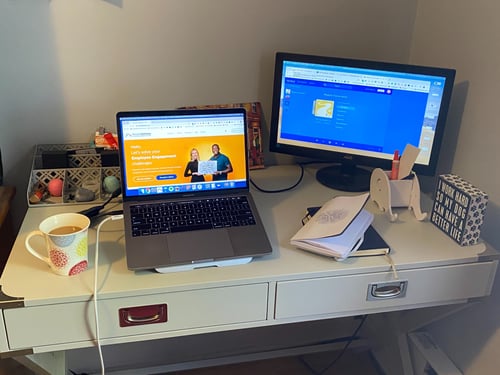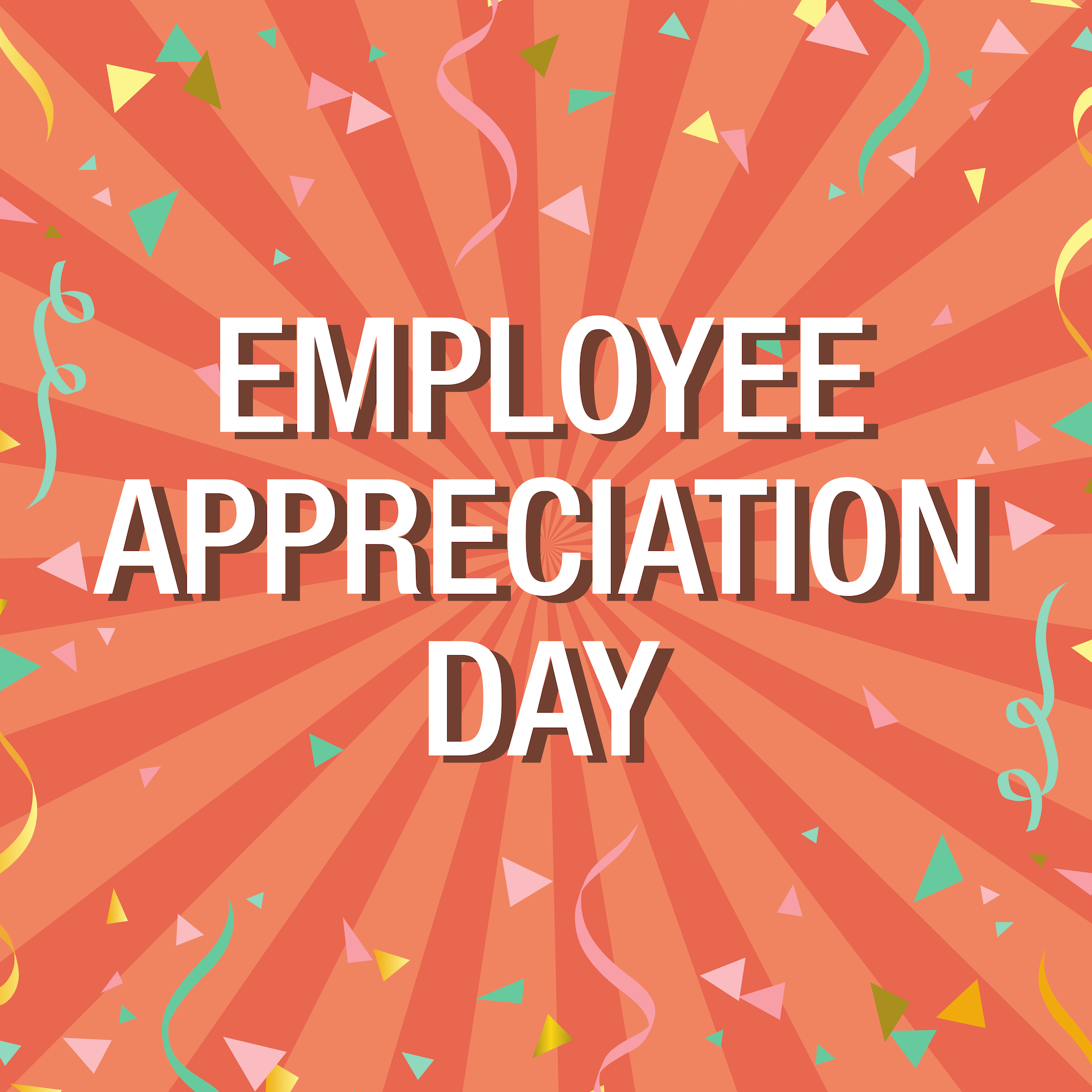How to reinvest your unused budget for the future
It’s a simple rule of budgeting: Think of how much money you could save if you cut out your daily latte - that’s 365 days savings per $4 cup of coffee - that’s nearly $1,500 annually.
 OK, now how about daily lattes for a 400-person company? Our company saved close to $35,000 on coffee alone in the year 2020. That’s what happens when you take a closer look at cost-savings at scale, for seemingly small things, like a Monday-through-Friday latte provided at no cost to your employees. What’s more, those cost savings can be reinvested in long-term strategy to create a more sustainable business for the future.
OK, now how about daily lattes for a 400-person company? Our company saved close to $35,000 on coffee alone in the year 2020. That’s what happens when you take a closer look at cost-savings at scale, for seemingly small things, like a Monday-through-Friday latte provided at no cost to your employees. What’s more, those cost savings can be reinvested in long-term strategy to create a more sustainable business for the future.
And that’s exactly what many organizations are experiencing as more and more people are unable (or unwilling) to return to their office spaces.
Now, while not every company may be as heavy coffee drinkers as others, there are savings to be found in hidden spaces as office budgets shrink, or even go away completely. Our own Experience Managers took a closer look at creative ways companies are saving, without having to change a thing.

The Friday happy hour doesn’t exist - and neither does the bar tab
It’s likely that many are missing the in-person happy hours to blow off some steam from a busy week at work and discover new ways of bonding with your fellow employees. While we saw organizations of all sizes look for countless ways to improve company culture while remote, the absence of face-to-face get-togethers means there’s no need to set aside funds for these events.
 “On a typical Friday, we would have one or two weeks a month where we would use some of our ‘fun money’ to buy drinks and food, and while they’re small amounts, it does add up. These small investments have a big impact on team morale and office culture, so it’s sad to see them go away,” says Boston Experience Manager Kaitlin Howes. “But the good news is that in our new world of work without these spontaneous outings, it’s letting the People Team plan our time together with teams so that they’re more strategic – quality over quantity.”
“On a typical Friday, we would have one or two weeks a month where we would use some of our ‘fun money’ to buy drinks and food, and while they’re small amounts, it does add up. These small investments have a big impact on team morale and office culture, so it’s sad to see them go away,” says Boston Experience Manager Kaitlin Howes. “But the good news is that in our new world of work without these spontaneous outings, it’s letting the People Team plan our time together with teams so that they’re more strategic – quality over quantity.”
The other benefit to planning ahead for fewer events, and making them count? The budget is there at the forefront, and there’s not as much of a need to anticipate last-minute costs.
For even larger events, like our typical in-person all-hands global event or the annual Christmas party, the savings are much more substantial. Turning an all-hands global event virtual saved thousands as Teams were able to tune in remotely, and have a small stipend for lunch delivered through our employee rewards program rather than an expensive after-hours party.
Ivelin Indzhov, the Experience Manager for our largest office in Plovdiv, estimates that he saved around 60% of the typical cost of the Christmas party for 200+ people by moving to a virtual format. With only 8-10% of the workforce actively using the office, he’s also saving on day-to-day expenses such as cleaning supplies and typical office supplies such as printing paper, ink cartridges and even postage.
There’s no longer a need to roll out the red carpet
For offices that are typically client-facing and host frequent client meetings or larger events for clients or the general public (like we do in our local offices), the absence of large crowds or face-to-face gatherings means that these supplies are no longer needed.
 “We have premium products in our restrooms because we want people who visit our office to experience a luxurious feel, which is everything from our cafe (currently closed) to the care taken in our bathroom product selection,” London Experience Manager Will Elliott explains. While costs can range significantly, Will estimates that offices can save up to $9,000 annually by zapping this from the annual budget.
“We have premium products in our restrooms because we want people who visit our office to experience a luxurious feel, which is everything from our cafe (currently closed) to the care taken in our bathroom product selection,” London Experience Manager Will Elliott explains. While costs can range significantly, Will estimates that offices can save up to $9,000 annually by zapping this from the annual budget.
On top of your bathroom savings (there’s a phrase we never thought we’d write on this blog!), entertaining clients or large crowds leads to expenses including catering bills (or even trays of $50 croissants for breakfast networking), branded company swag (those free notepads or pens add up!) or books for takeaways. We often give away copies of our Founder’s book, “The Rebel Playbook,” to visitors, so each office has to have a plentiful stock supply.
No one is breaking conference room chairs
Have you ever been the employee that sheepishly has to tell your Experience Manager that you’ve broken an arm rest? No, just me?
 Each of those fumbles add up to serious dollars, says Kaitlin Howes. “Because you don’t have people physically there, there’s close to zero chance of things breaking,” she explains, rattling off expenses she’s dealt with in the past: Plumbing issues such as broken sinks or non-flushing toilets, broken office chairs, or paint chipped on office furniture, to name a few.
Each of those fumbles add up to serious dollars, says Kaitlin Howes. “Because you don’t have people physically there, there’s close to zero chance of things breaking,” she explains, rattling off expenses she’s dealt with in the past: Plumbing issues such as broken sinks or non-flushing toilets, broken office chairs, or paint chipped on office furniture, to name a few.
On the flip side, if your office has decided to downsize permanently, one way to make money is to sell what’s not being used anymore. “Why not throw a socially-distant warehouse sale?” Kaitlin asks. “With many offices reducing capacity to zero to 25% of employees working on-site, there’s an opportunity to sell your extra furniture for those who might need it.”
When looking at budget spends year on year, Group Financial Controller Teresa Lau points to the largest savings outside of the office coming from expenses on employee travel and Marketing.
This comes from many employees unable or unwilling to travel to satellite offices, and typical big trade show events being replaced with their more nimble, virtual counterparts.
She’s also seen a 25% year-over-year savings on stationery and office supplies (a small fraction of your overarching office costs).
Reinvesting extra budget into long-term investments
Companies that are looking toward the future are rightfully thinking about their long-term sustainability, and it’s this attitude that may make an employer shy away from an initial large price tag.
But the right kind of investment can scale with your business as it continues to grow, while providing continued support for your people, no matter where they’re working.
 “At Reward Gateway, we reinvested some of our savings into the wellbeing of our people,” says Group HR Director Robert Hicks. He pointed to the employer-funded “Work from Home Bundles” offered to employees to provide an update to their virtual workspace as a way to improve engagement during COVID-19, alongside virtual boot camps, new L&D programs and an extended book benefit. Along the way, the People Team has also brought more awareness to financial support and benefits during COVID-19 to employees such as our employee discounts program and monetary perks through our employee rewards program.
“At Reward Gateway, we reinvested some of our savings into the wellbeing of our people,” says Group HR Director Robert Hicks. He pointed to the employer-funded “Work from Home Bundles” offered to employees to provide an update to their virtual workspace as a way to improve engagement during COVID-19, alongside virtual boot camps, new L&D programs and an extended book benefit. Along the way, the People Team has also brought more awareness to financial support and benefits during COVID-19 to employees such as our employee discounts program and monetary perks through our employee rewards program.
For other businesses, providing an opportunity for a long-term investment during COVID-19 like an employee engagement platform that can bring together initiatives such as reward and recognition, communications, surveys and wellbeing together in one place can tick off multiple boxes and impact your workforce in a positive way – as well as make your CFO happy!
To bring the business case for investing in an offering like an employee engagement platform or other initiatives to your own CFO, it’s important to put pencil to paper and crunch those numbers. By proving the cost savings within the pandemic, an investment that will help your business continue to survive (and thrive) in the coming months will seem like the wisest way to bring your business into the future.
Want to chat about new ideas for your business? Get in touch with a member of our team to learn more.

 Chloe Thompson
Chloe Thompson






